Sculptures are 3-dimensional pieces of art viewed much differently than flat pieces like paintings. Throughout history, they’ve held a prominent role in public places and private collections, and as time has passed, some of these sculptures have become instantly recognizable. Which sculptures are the most well-known? We’ll review the 15 most famous sculptures in the world and some details about each.
15. Leshan Giant Buddha
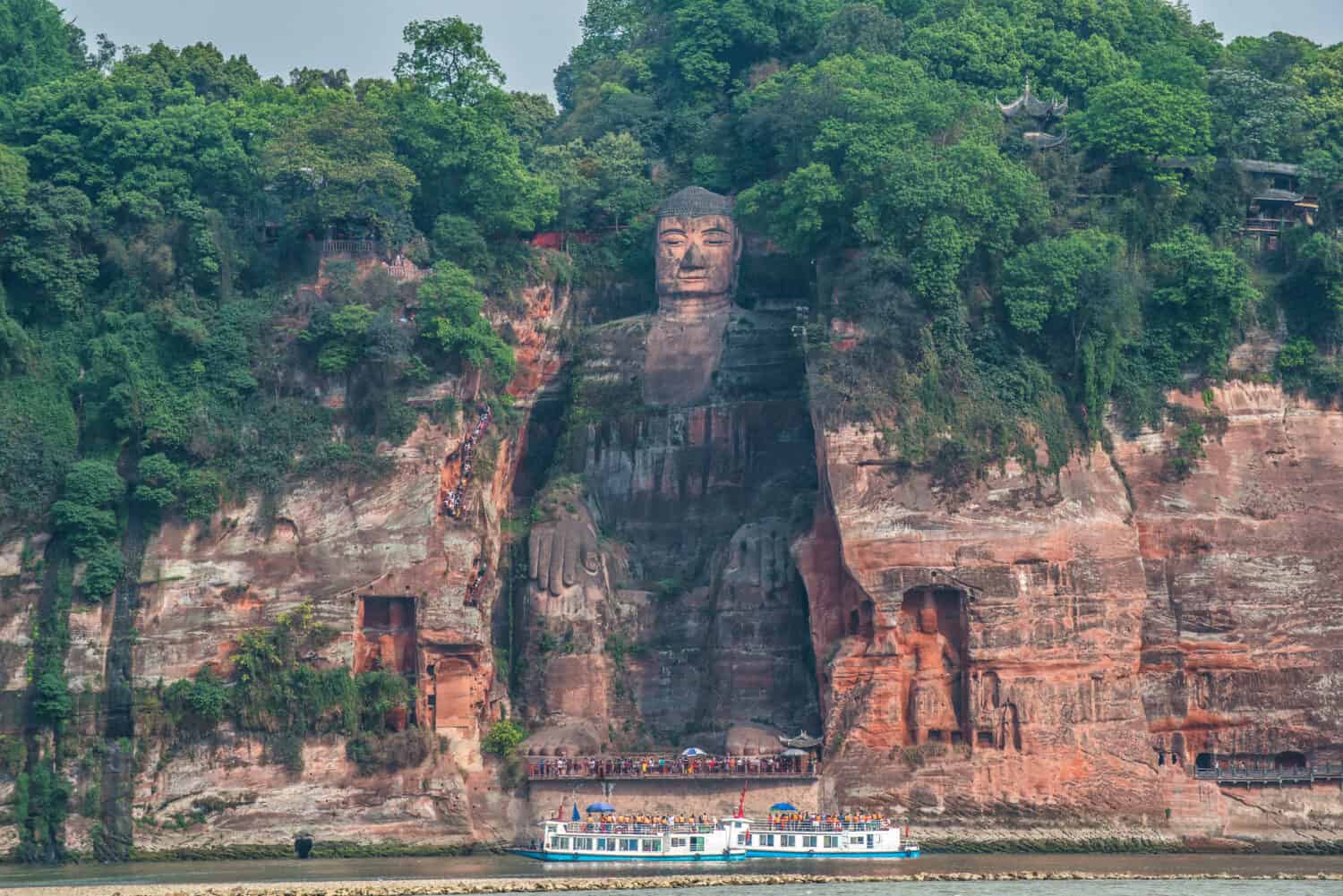
The largest Buddha statue in the world is the Leshan Giant Buddha in China.
©Tracy ben/Shutterstock.com
The Leshan Giant Buddha is the largest Buddha statue in the world, and it’s located in China in the Sichuan Province on Lingyun Mountain’s Qifeng Peak. It’s 233 feet tall and carved into a red sandstone cliff above the location of the three-river confluence of the Quingyi, Minjiang, and Dadu Rivers. It dates back to the Tang Dynasty in the eighth century, and it took many years to finish, with construction lasting from 723 to 803 CE.
A Buddhist monk named Hai Tong oversaw the project. He died before it was completed. However, his disciples finished it. Over the centuries, it has had frequent repairs due to natural erosion and wartime damage.
14. Spiral Jetty
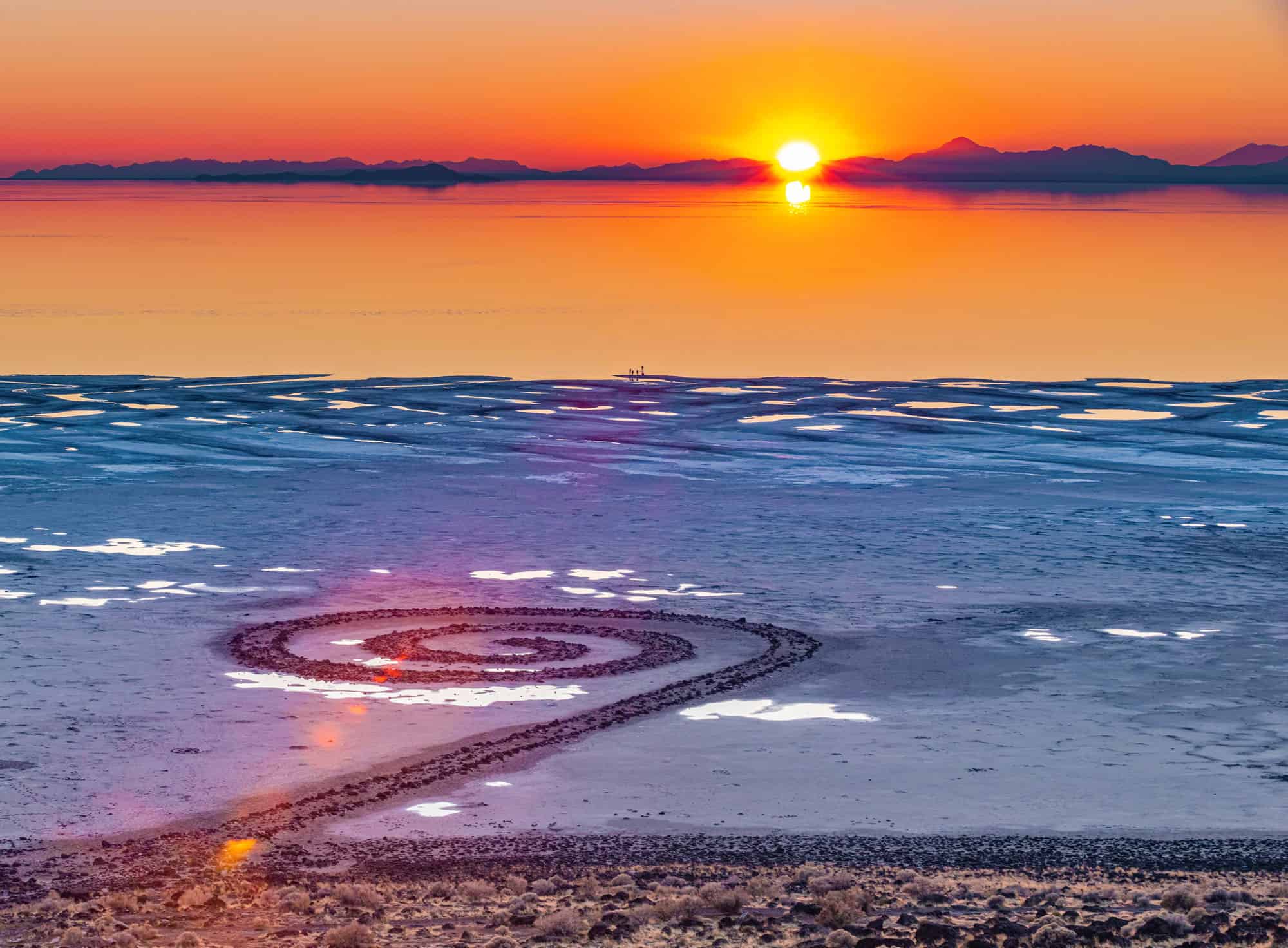
Robert Smithson created the Spiral Jetty in Utah’s Great Salt Lake in 1970 CE.
©Abbie Warnock-Matthews/Shutterstock.com
The Spiral Jetty is a large piece of land art by Robert Smithson on the Great Salt Lake in Utah on its northeast shore. It is made of basalt rocks, mud, and salt crystals in 1970 CE. The piece is a counterclockwise spiral 1500 feet long and 15 feet wide.
It originally protruded from the shore into the water, but due to the lake’s shrinkage over the last few years, the Spiral Jetty is now a mile from the waterline on dry land. The sculptor chose its spot decades ago because the water is usually red due to the algae and bacteria content at its location. While the nonprofit tries to protect the site from destruction by natural causes, the artist expected it to be destroyed and stated that this destruction is part of why he created the piece.
13. Nike of Samothrace
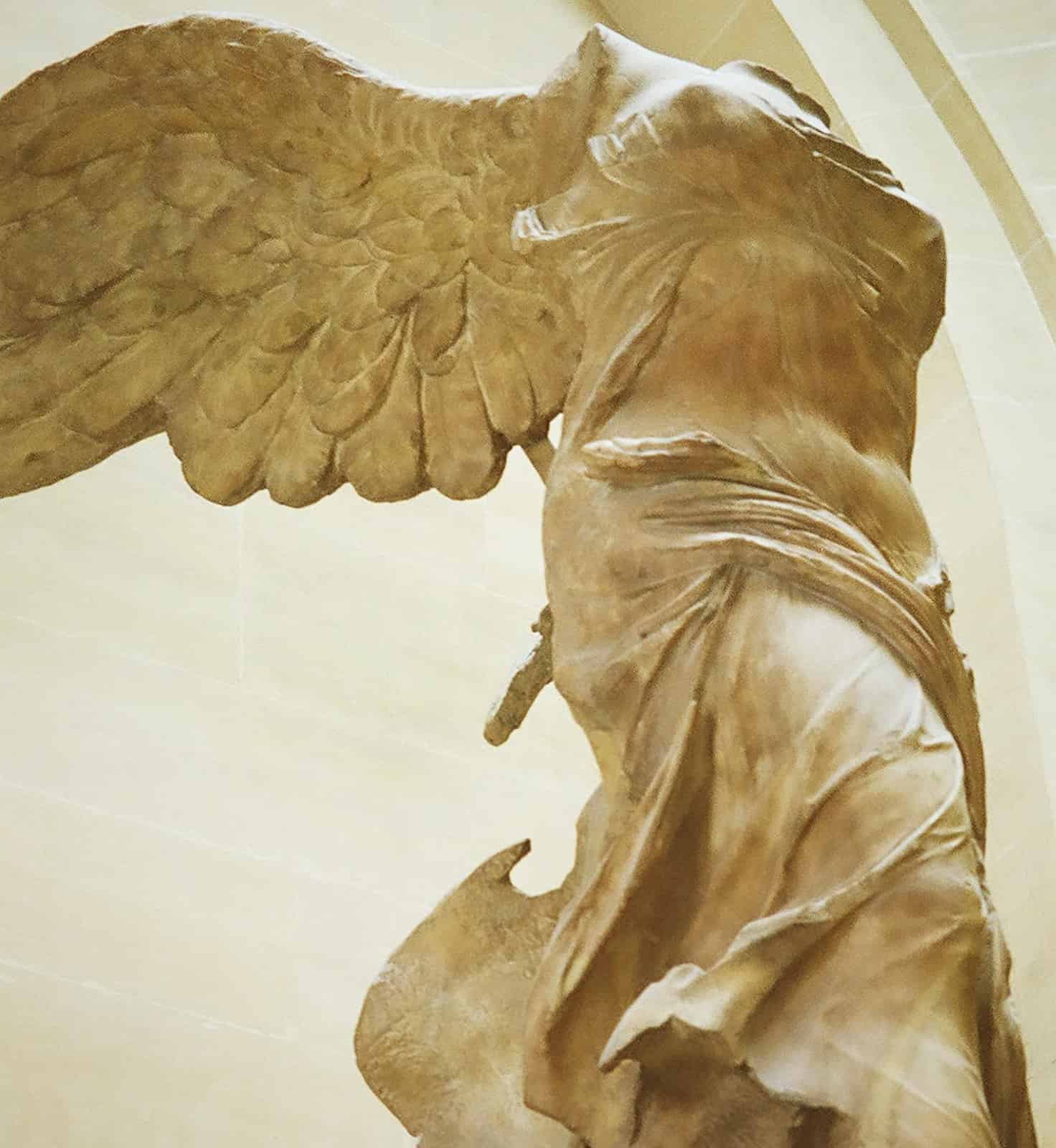
This is a Hellenistic sculpture dating back to 190 BCE.
©crystaltmc/iStock via Getty Images
The Nike of Samothrace exemplifies Ancient Greek Hellenistic art, most likely created in 190 BCE. This sculpture is on Samothrace, a Greek island in the Aegean Sea.
The statue’s remains were originally discovered in over 110 marble pieces. As seen today, the statue has undergone a few restorations with plaster to make it look more complete.
Visitors must travel to the Louvre in Paris, France, to see the Nike of Samothrace in person. The statue sits in the middle of the large Daru staircase and is approximately 9 feet tall.
12. Laocoön and His Sons
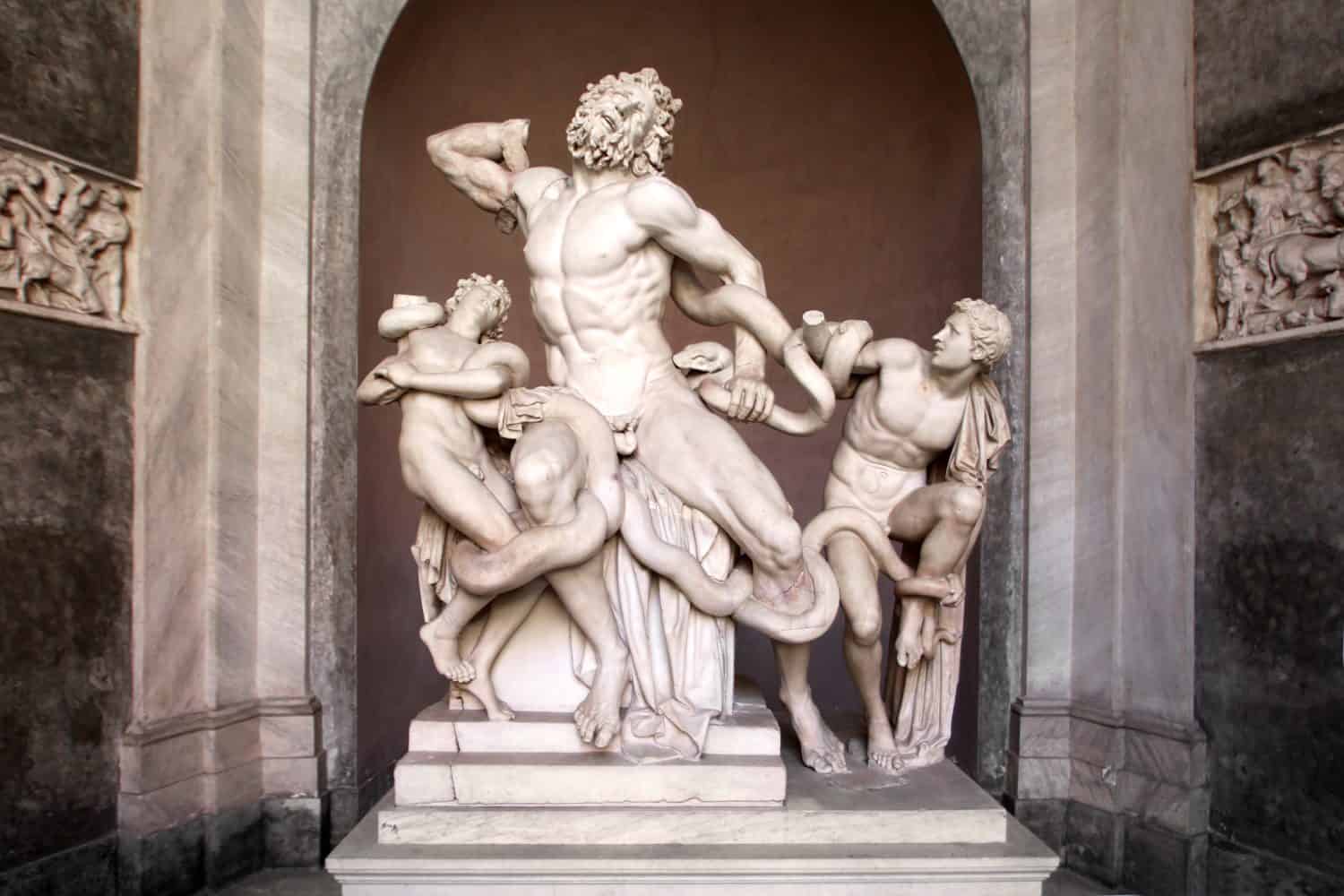
The Roman copy of the Ancient Greek sculpture of Laocoon and His Sons is at the Vatican.
©MisterStock/Shutterstock.com
The Laocoon and His Sons is an ancient replica of a sculpture created in bronze by the Ancient Greek sculptors of Rhodes as described by Pliny the Elder. The extant Roman copy made of marble was discovered in 1506 CE and was purchased by Pope Julius II. Since then, it has been a mainstay of the sculptural collection at the Vatican.
It was probably created between 40 and 30 BCE. However, no one is sure exactly when it was made. The statue portrays Laocoon and his sons being killed by sea snakes sent by Athena and Poseidon.
11. Pieta
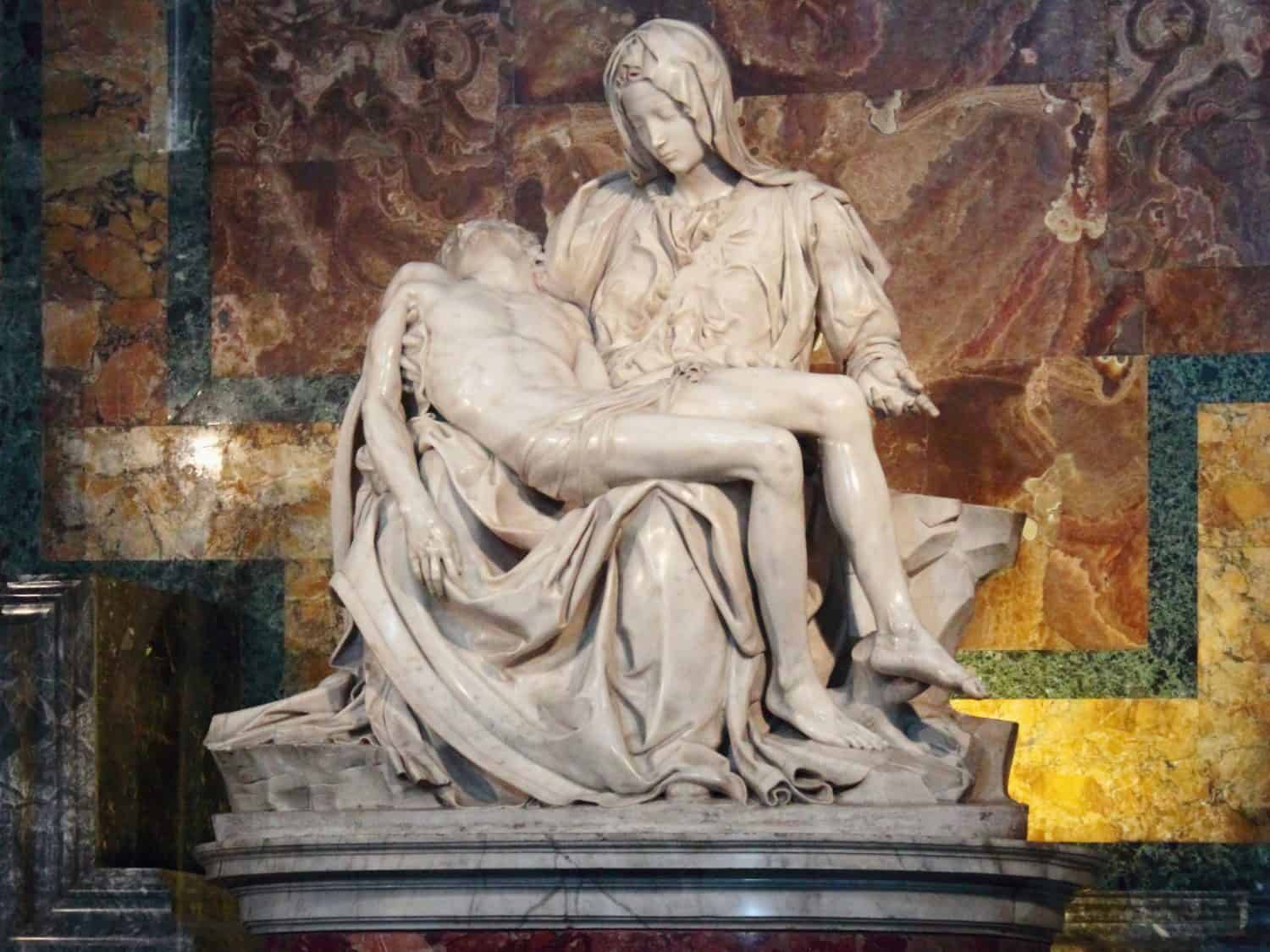
Michelangelo’s Pieta is at St. Peter’s Basilica in Vatican City.
©P.Brunclik/Shutterstock.com
The Pieta by Michelangelo in St. Peter’s Basilica inside Vatican City is a staple of Renaissance art between 1498 and 1499 CE. Also known as Madonna della Pieta, this sculpture depicts Jesus after he died. He has been removed from the cross and laid in the Virgin Mary’s lap.
This particular sculpture is one of the pivotal pieces signaling the beginning of the High Renaissance in the Italian Renaissance. This piece of art combines the Renaissance revival of classical aesthetics with a burgeoning representation of naturalism. Cardinal Jean Bilheres de Lagraulas commissioned it as his funeral monument, and it is the only piece of art that Michelangelo signed.
10. Bust of Nefertiti
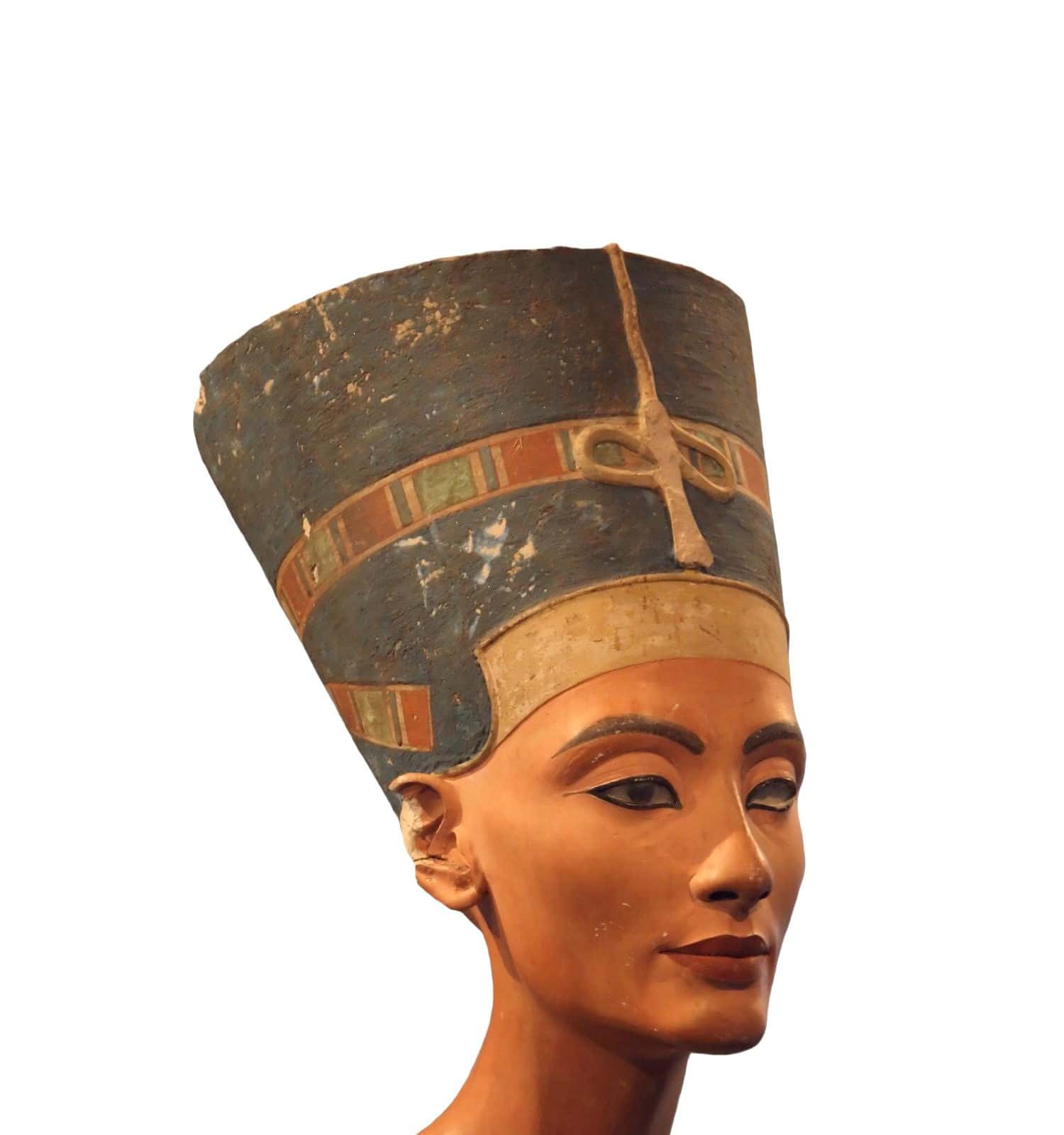
The limestone and stucco Bust of Nefertiti was made sometime between 1351 and 1334 BCE.
©tkachuk/Shutterstock.com
The Bust of Nefertiti currently resides in the Neues Museum Berlin in Germany, though it originated from Tell el-Amarna during Ancient Egyptian times. It dates back to about 1351 to 1334 BCE because it’s a product of the New Kingdom’s eighteenth dynasty. It’s lifesize at about 18 and a half inches tall.
The bust is made of limestone layered with stucco and painted with pigments like carbon black, yellow orpiment, red ochre, green frit, and Egyptian blue. The one extant eye is polished crystal covering black dyed beeswax, which makes up the visible pupil and iris. Nefertiti was Akhenaten’s wife, one of the most controversial Pharaohs in Ancient Egyptian history.
9. Terracotta Army
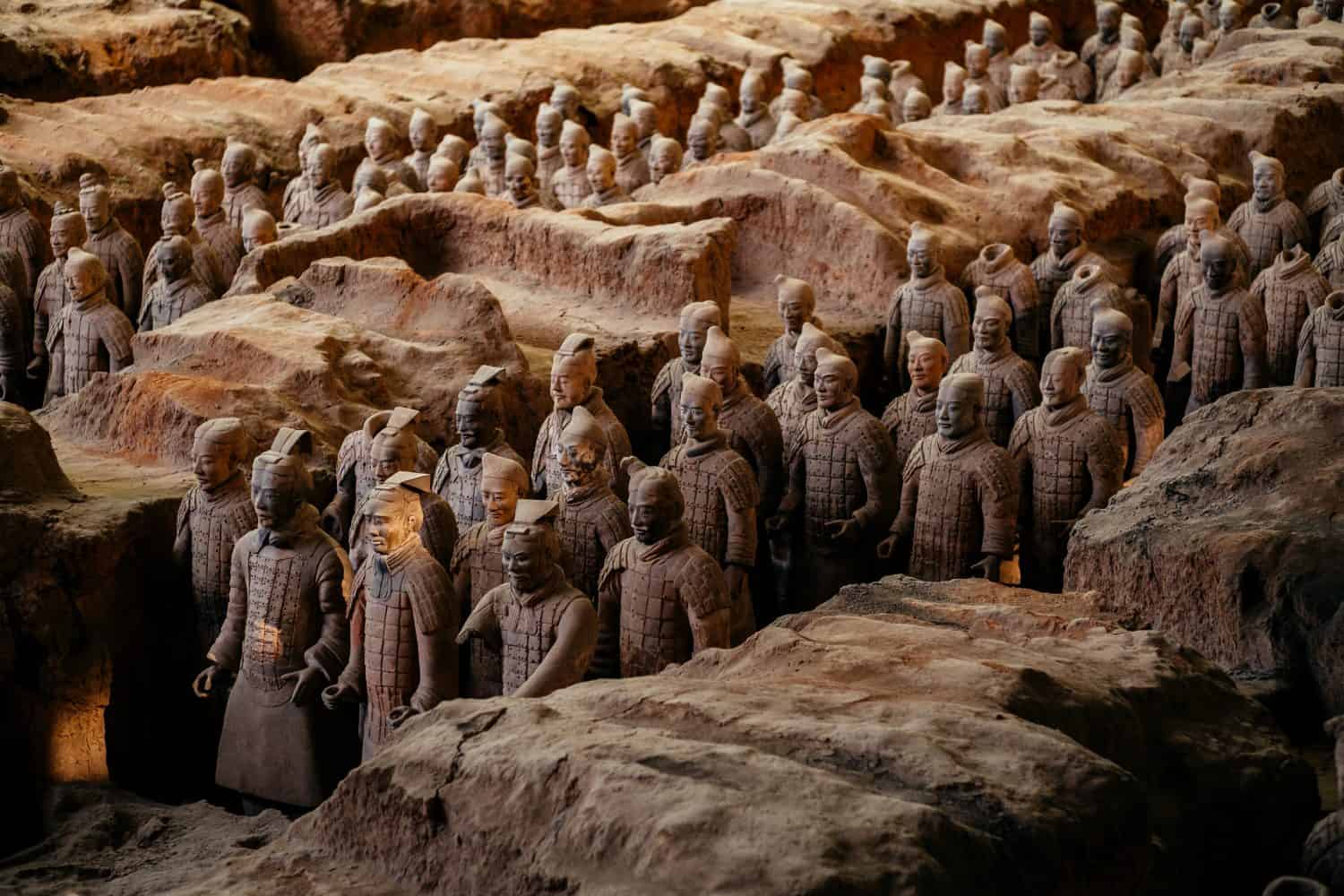
More than 8000 statues make up the Terracotta Army buried with the first emperor of China.
©costas anton dumitrescu/Shutterstock.com
More than 520 horses, 8000 warriors, 130 chariots, and more make up the Terracotta Army discovered by farmers outside Xi’an in Shaanxi, China. There are undoubtedly more statues and excavation of the site continues. Because of such a great find, it is the biggest cache of figures made of pottery ever discovered.
Since it was such a large undertaking, records show that over 700,000 people worked on making the army and that construction began in 246 BCE. The Terracotta Army was buried with the first emperor of China, Qin Shi Huang, in 210 or 209 BCE. Despite its size, it is just one facet of a huge necropolis occupying up to 38 square miles.
8. Venus of Willendorf

The Venus of Willendorf is an Upper Paleolithic statue created about 25,000 BCE.
©Lefteris Tsouris/Shutterstock.com
The Venus of Willendorf is a small Upper Paleolithic statue that’s just shy of 4 and a half inches tall. It was created around 25,000 BCE, and it was found in 1908 CE in Austria. It’s stained with red ochre and constructed from oolitic limestone that isn’t found in the region where it was discovered.
It’s currently in Vienna, Austria, as part of the Natural History Museum collection. It has nothing to do with the goddess Venus. It has this name because its exaggerated feminine features were assumed to be some fertility goddess veneration. Because there is no discovered cultural context backing up this assumption, this interpretation is now contested.
7. Lincoln Statue

The Lincoln Statue in Washington, D.C., weighs 175 tons because it is made of marble.
©S.Borisov/Shutterstock.com
The Lincoln Memorial in Washington, D.C., houses the Lincoln Statue. It’s a large Georgia white marble statue showing President Lincoln sitting with one hand clenched and one relaxed. The statue is 19 feet tall and 19 feet wide, weighing 175 tons.
Daniel Chester French directed the Piccirilli brothers in their sculpting. It’s an example of the American Renaissance and Beaux Arts traditions, completed in 1920. In 1922, the Lincoln Memorial opened.
6. Moai
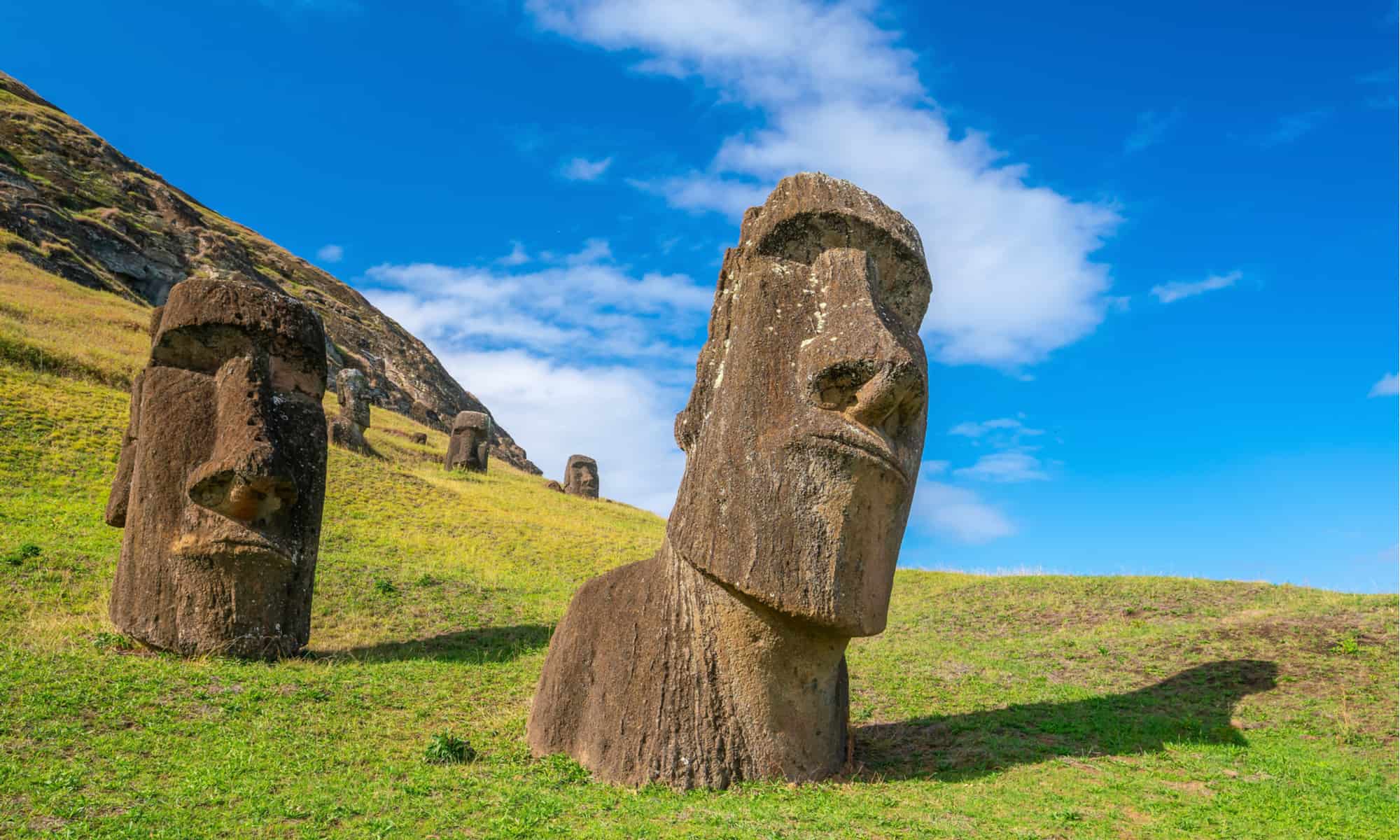
The Moai monoliths on Easter Island were created by the Rapa Nui between 1250 and 1500 CE.
©f11photo/Shutterstock.com
Moai are monoliths created by the Rapa Nui on Easter Island between 1250 CE and 1500 CE. They represent deified ancestors, so they were arranged to look over their old lands. Over 900 statues have been discovered, with more still being found.
These statues are huge. Their faces comprise a little less than half their total height. How they were transported is still a mystery. They’re made of solidified volcanic ash, and some statues still stand where they were created. They are there because they haven’t been transported to their final destination.
5. Christ the Redeemer

The Art Deco soapstone sculpture called Christ the Redeemer towers above Rio de Janeiro.
High above Rio de Janeiro in Brazil stands the Christ the Redeemer statue. French sculptor Paul Landowski created the statue, while a Romanian sculptor named Gheorghe Leonida created the face. It was created between 1922 and 1931.
Christ the Redeemer is an Art Deco soapstone and reinforced concrete sculpture 98 feet tall from its feet to its head with an arm span of 92 feet. Because of the materials used to build it, it weighs about 700 tons and is at an elevation of 2300 feet on Corcovado Mountain.
4. Cloud Gate
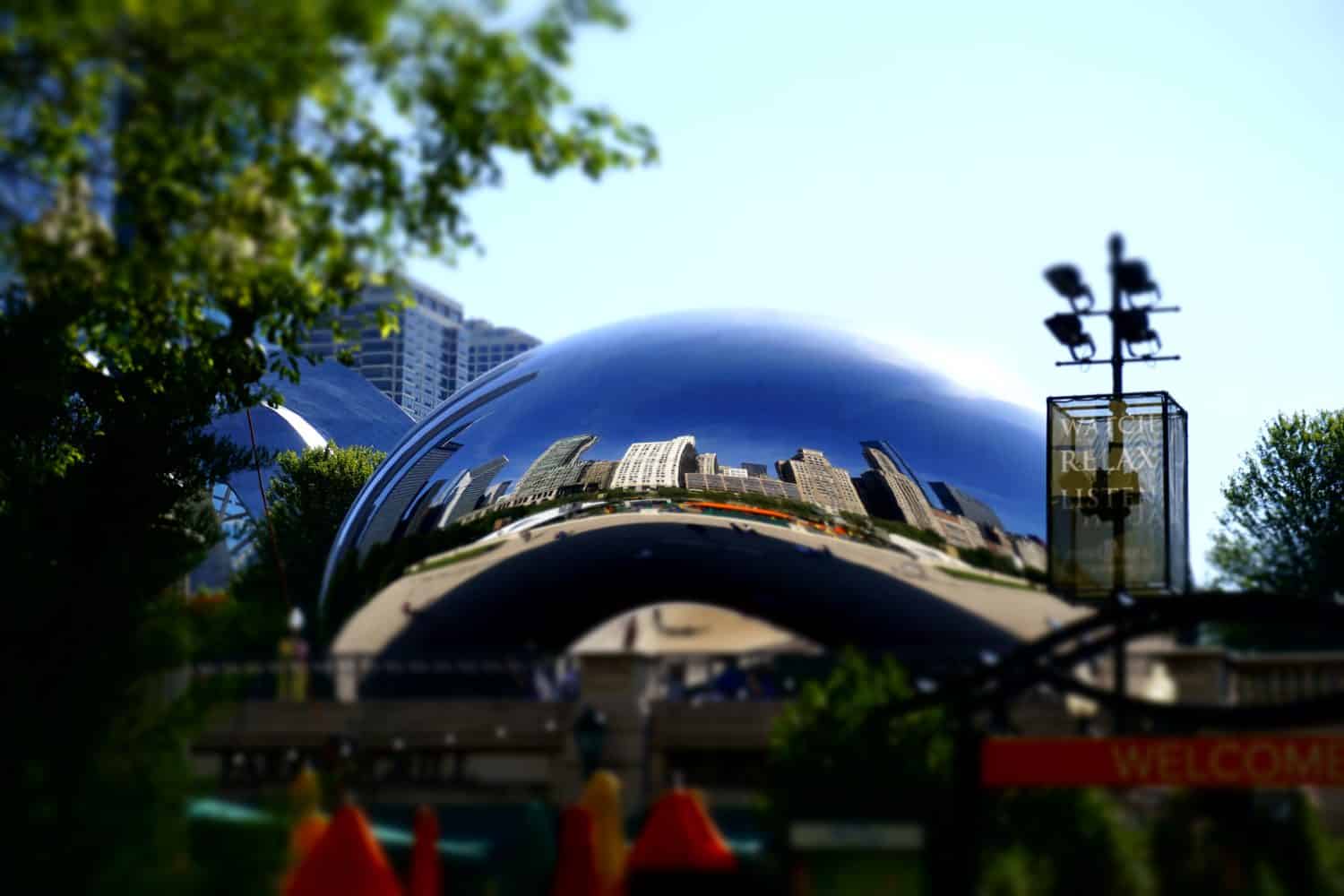
Because of its shape, Anish Kapoor’s sculpture called Cloud Gate is better known as the Bean.
©AK1013/Shutterstock.com
Colloquially known as the Bean, Anish Kapoor’s Cloud Gate sculpture in Chicago was created in 2006. It’s accessible to any visitor of Millennium Park at the AT&T Plaza.
The arch underneath Cloud Gate is 12 feet tall, and visitors can walk underneath it. Tourists can also touch the sculpture and take pictures or selfies that take advantage of its highly reflective surface.
3. Great Sphinx of Giza
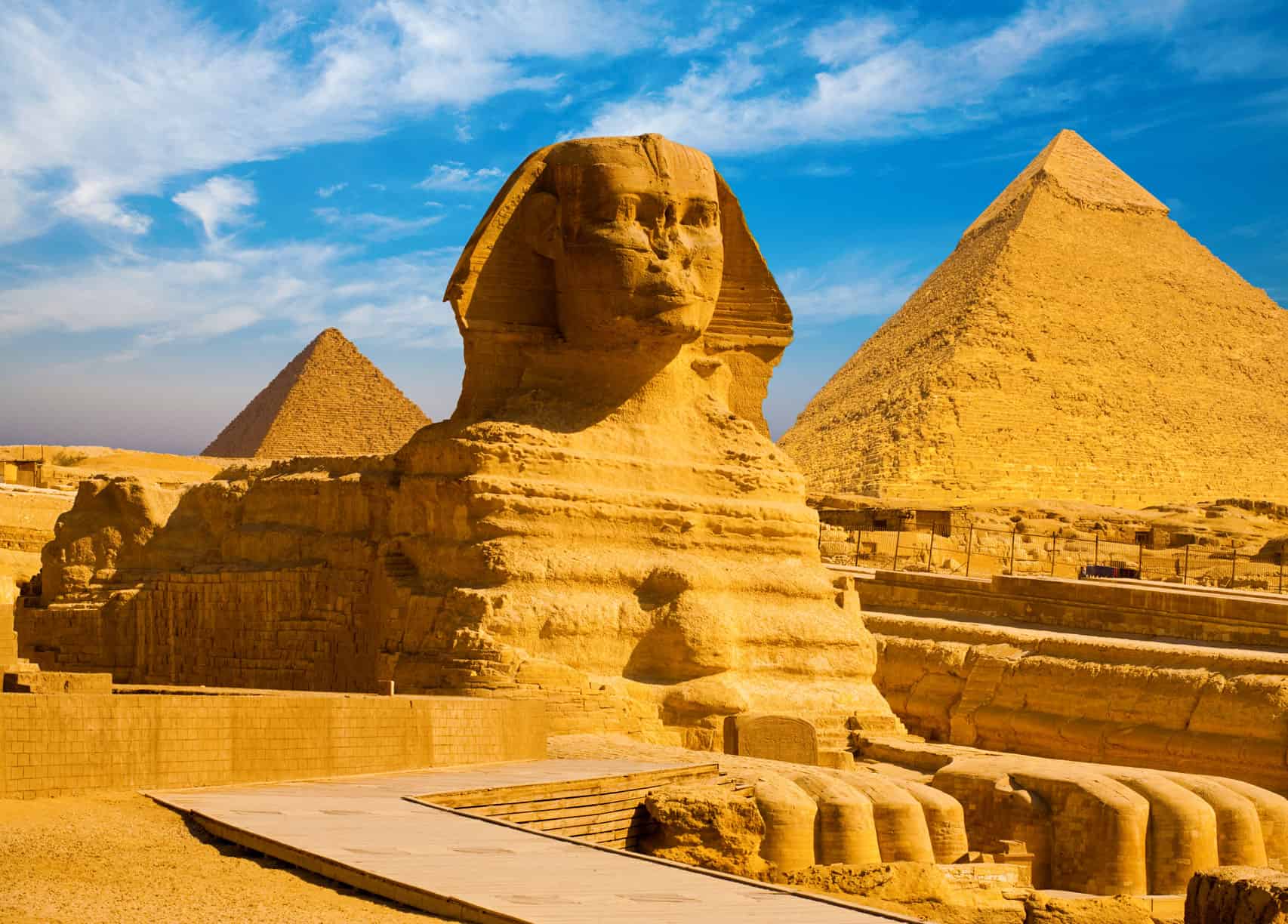
The oldest known monumental sculpture is the Great Sphinx of Giza.
©iStock.com/pius99
The Great Sphinx of Giza is a statue in Giza, Egypt, that is 240 feet long and 66 feet high when measured to the top of its head. It depicts the sphinx from Egyptian mythology, a creature with a lion’s body and a human head.
The huge sculpture, the oldest monumental sculpture in Egypt, is made of limestone. It was probably made during Khafre’s reign during the Old Kingdom, around 2559 to 2532 BCE.
2. Statue of Liberty

On Liberty Island in New York City, the Statue of Liberty has stood since 1886 CE.
©Matej Hudovernik/Shutterstock.com
The Statue of Liberty on Liberty Island in New York City is an icon of the United States of America. Given to the United States by the people of France, its official name is The Statue of Liberty Enlightening the World.
It’s an example of the Neo-Classical art of copper that Frederic Auguste Bartholdi of France designed. Gustave Eiffel built the framework of the statue, and it was dedicated in 1886 CE.
The Statue of Liberty is a representation of the Roman goddess Libertas, who is the goddess of liberty. Because of this, it is a famous symbol for immigrants arriving at Ellis Island, and it continues to be a symbol of freedom today.
1. Statue of David
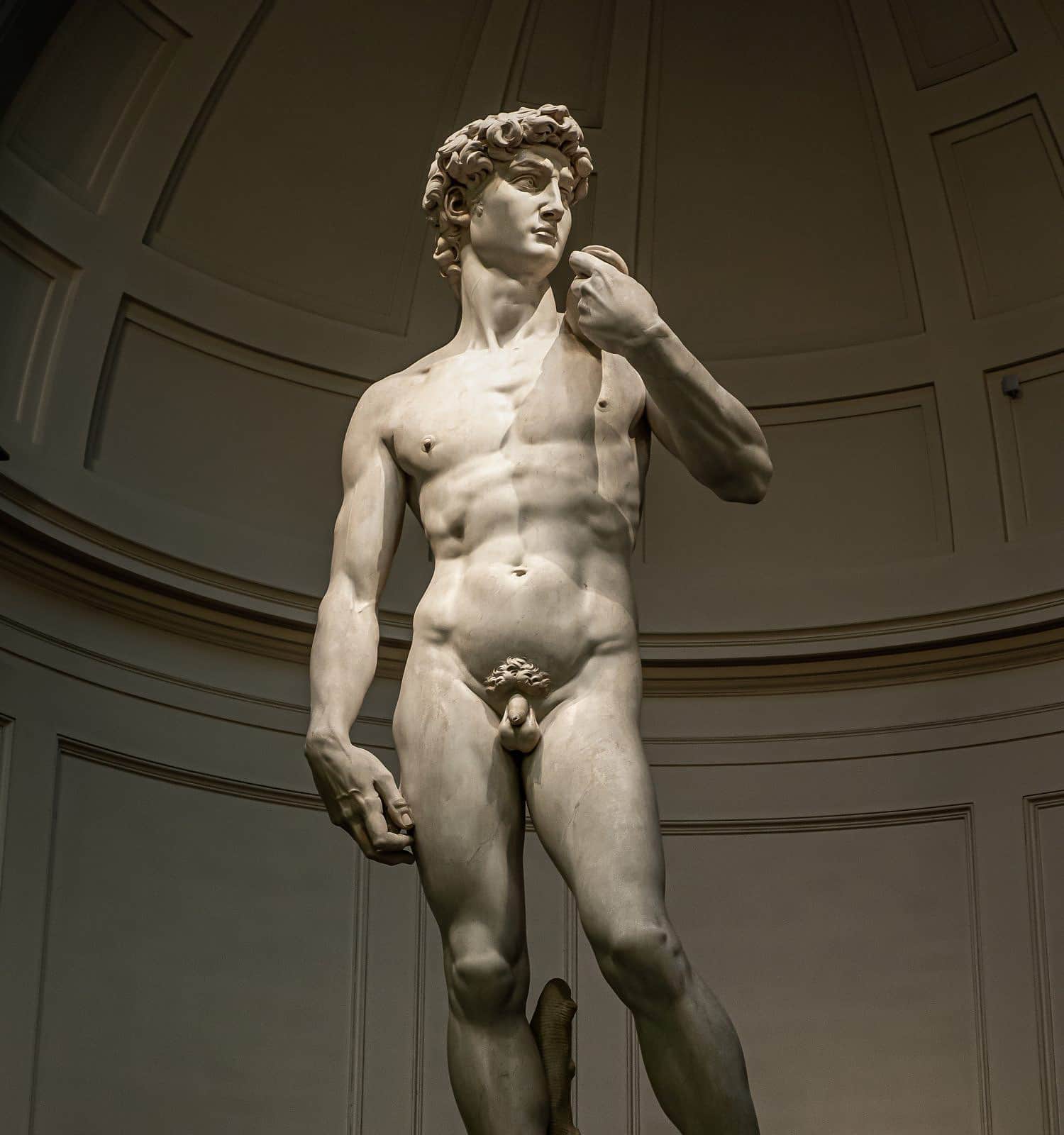
The Statue of David by Michelangelo is arguably the most famous sculpture in the world.
©Abel Jurado/Shutterstock.com
The Statue of David by Michelangelo is arguably the most famous sculpture in the world. A carving of marble block that had passed through 2 other artists’ hands in 1465 CE before Michelangelo finished it between 1501 and 1504 CE. Originally on display at the Palazzo della Signoria in Florence, Italy, it now lives at the Galleria dell’Accademia di Firenze.
The Statue of David weighs over 6 tons and is 17 feet tall. It’s an example of sculpture from the Italian Renaissance, considered one of the world’s greatest masterpieces.
Summary of the 15 Most Famous Sculptures in the World
| Name of Statue | Place of Statue | Statue’s Artist | Year Statue Was Made | |
|---|---|---|---|---|
| 1 | Statue of David | Florence, Italy | Michelangelo | 1501 to 1504 CE |
| 2 | Statue of Liberty | Liberty Island, NYC | Frederic Auguste Bartholdi | 1886 CE |
| 3 | Great Sphinx of Giza | Giza, Egypt | Unknown | 2559 to 2532 BCE |
| 4 | Cloud Gate | Chicago | Anish Kapoor | 2006 CE |
| 5 | Christ the Redeemer | Rio de Janeiro, Brazil | Paul Landowski and Gheorghe Leonida | 1922 to 1931 CE |
| 6 | Moai | Easter Island | The Rapa Nui | 1250 to 1500 CE |
| 7 | Lincoln Statue | Washington D.C. | Daniel Chester French | 1920 CE |
| 8 | Venus of Willendorf | Vienna, Austria | Unknown | 25,000 BCE |
| 9 | Terracotta Army | Xi’an, China | Over 700,000 Workers | 246 to 209 BCE |
| 10 | Bust of Nefertiti | Neues Museum Berlin, Germany | Unknown Egyptian | 1351 to 1334 BCE |
| 11 | Pieta | Vatican City | Michelangelo | 1498 to 1499 CE |
| 12 | Laocoön and His Sons | Vatican City | Unknown Roman | 40 to 30 BCE |
| 13 | Nike of Samothrace | Louvre, Paris, France | Unknown | 190 BCE |
| 14 | Spiral Jetty | Great Salt Lake, Utah | Robert Smithson | 1970 CE |
| 15 | Leshan Giant Buddha | Qifeng Peak, Lingyun Mountain, Sichuan, China | Hai Tong | 723 to 803 CE |
The photo featured at the top of this post is © costas anton dumitrescu/Shutterstock.com
Thank you for reading! Have some feedback for us? Contact the AZ Animals editorial team.







